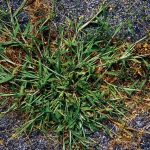Winter Damage – Protecting Your Landscape
Winter can cause immense damage to your trees and plants. Occasionally, when the spring comes back around, the damage will be reversed (to some degree), but there are many times when the damage is completely irreparable.

Permanent damage occurs with sudden temperature change and with severe or prolonged winter conditions. Tissue death, or ‘winter scorch,’ is caused when the plant uses its water reserve faster than the roots can intake new water from the frozen soil. The foliage on winter scorched trees or shrubs will look burnt and eventually begin falling off, leaving you with a bare, unappealing plant.
Winter damage is often confused with fungal or insect damage. Evergreens, for example, can yellow throughout the winter; however, when new growth comes in the spring they will return to their normal green hue. Freezing and thawing cycles can also turn your foliage a brownish or reddish color, but most of the time this is just winter sun burn or wind burn and the natural color will return in the spring.
Salt burn is also an issue in the winter. De-icing salt will accumulate on leaves and leave an unpleasant look, similar to winter scorching. A heavy accumulation of de-icing salt can potentially cause irreparable damage by killing buds and branch terminals.
The extra weight of snow and ice can also cause damage to your plants. Snow and ice can cause bent or broken limbs. Carefully removing accumulated snow on tree limbs can help save your trees before the weight causes them to snap. However, do not attempt to remove snow from shrubs, as when they are frozen they become extremely brittle and will most likely break.
The best way to prevent winter damage to your landscape is to select plants that are hardy and acceptable for your area. Setting up a windbreak, such as a burlap or plastic barrier, can protect your plants from wind damage. Also, make sure to provide your plants with plenty of water in the fall to help keep them healthy throughout the winter. Be sure to inspect your plants in the spring and eliminate any areas that have been affected by winter damage.








